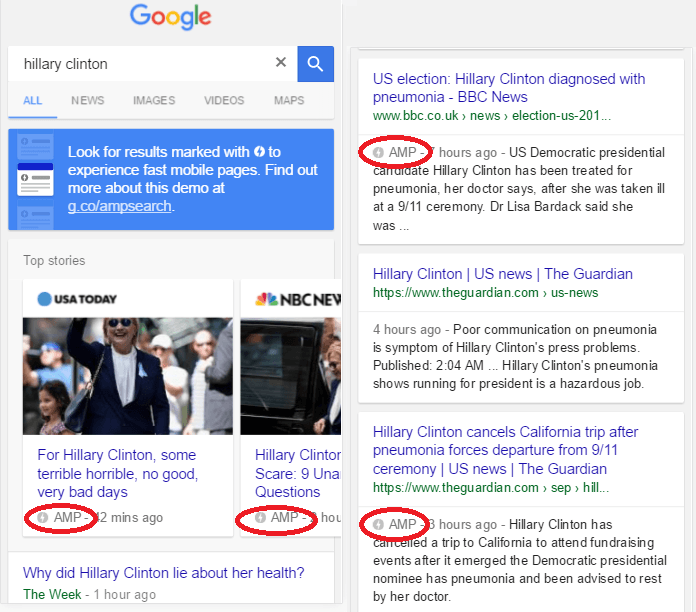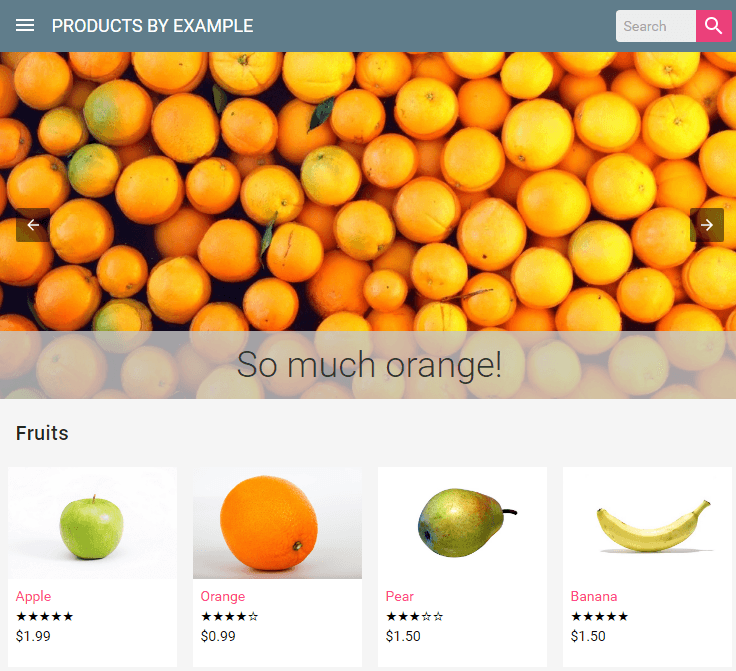To AMP Or Not To AMP – Why You Need to Be Thinking About Accelerated Mobile

By Stephen Jones|15 Sept 2016
What is AMP?
AMP stands for ‘Accelerated Mobile Pages’ and is a new format adopted by Google to deliver extra-fast pages for mobile browsers, delivered from the Alphabet Server. Google announced its intentions to expand the range of content that’s supported in AMP by the end of the year, meaning super-quick versions of non-news pages will start appearing in search results.
Read on to discover more about what implications this has and what you need to about it, or refresh your knowledge about the basics of AMP.
Who is it for?
Apart from mobile users (obviously), the initial tests were done with a selection of news providers. User testing results proved so impressive that Google quickly opened the ‘experiments’ out to a live environment, offering any site the chance to develop AMP versions of their news and blog content.
AMP news results currently get their own little carousel at the top of search engine result pages (SERPs):

But soon, it’s going to be for everybody.
Google has a demo available for mobile devices (or desktops running mobile emulators), although results are still heavily news-orientated:

AMP - the essential questions
Should you be using AMP?
News providers
If you provide news content, have a blog, or any sort of static information page, you should really be looking to implement AMP. Google is pushing heavily for the initiative, due to the high levels of interest. Maintaining or increasing organic visibility could be difficult if your competitors are using AMP and you are not.
High mobile traffic
If you have a large mobile audience segment, you should be considering what content may work better with AMP delivery:
- Are there pages or content sections that are more popular on the website?
- Do pages have a high bounce rate or low conversion for mobile users?
- Is it disruptive for the business or a user to get this content delivered by Google?
- What uplift could be achieved from better interaction with mobile customers?
Assessing these questions will give an idea of the cost vs the benefit of converting content sections into AMP versions, or recreating site categories in the AMP format.
Competitor space
The SERPs environment is likely to change and feature better visibility for AMP results (regardless of whether this becomes a ranking factor in the future. Google states it currently isn’t). The chance of appearing in useful positions is reduced if competitors are using AMP content to push down other organic results.
Customer fit
What is the experience like for your mobile customers? Given that mobile-friendly sites do not always perform very quickly (check your site performance here), providing relevant content in AMP format might be a better experience for your customers.
What content formats will be covered?
Example pages show basic (but functional) e-commerce sites and eBay recently announced it was using AMP to speed up its mobile site and was collaborating with Google on ‘other features.’

It’s likely that many of the current content types that can be supported by rich snippets and structured data might lend themselves to AMP display. Items such as locations, organisations, recipes and events feed nicely into Google’s philosophy of ‘ micro moments’, which are frequently things you need in a hurry, on the go and on a mobile device.
Shopping does present a problem – the functionality needs to be much simpler and pass users out of the AMP environment to transact. However, user uptake could show a preference for simplified, reduced shopping areas that load faster, especially in countries where high speed mobile networks are not widespread. There’s also a growing trend for using smart pay features on phones. So, it wouldn’t be a huge leap to expect the first AMP e-commerce store to use Google Wallet to plug this transactional gap.
What developments are planned for AMP?
There is a development roadmap for AMP which includes better functionality for tracking, split testing and rich media. Given that AMP can embed video, but media files can still take time to load, it wouldn’t be surprising if Google found a way of supercharging YouTube delivery.
There have already been amendments to include better accessibility from user feedback; Google is likely to use client applications as a live test to see what works, what’s useful and what isn’t.
How do I get started with AMP?
Both WordPress and Drupal provide themes, plugins and modules for AMP content, so if you run those platforms you won’t have to fiddle with too much code. For others, there’s a defined set of requirements and examples, and Google have indicated they will be providing additional support using the #AMPlify hashtag over the ‘next few weeks’ on top of its usual help and feedback on Google Webmasters.
Ultimately, if you are curious about AMP, the wisest approach would be to test AMP versions of content and see what works best with your audience and users
Pros and Cons of using AMP
Advantages
Speed – The primary advantage of AMP is the speed. AMP uses a stripped-down format and mobile users get content delivered blisteringly fast – without the usual scripts and styling that takes time to deliver over mobile connections, and struggles with rendering on different handsets. AMP pages are four times faster and generally load in less than a second.
Improved CTR – There’s been good feedback from the majority of publishers who participated in the project stating that click-through rates and ad views were higher on AMP pages. This follows Google’s general assertion that faster pages make happier users (who are more inclined to do click or take an action).
Fast adoption – Google is getting behind this in a big way, with all that their immense market share implies. 4 million AMP pages are being added every week, and it’s likely that following the general content roll-out, there will be a variety of SERP display tests giving extra visibility to the new AMP content formats (much as we currently see with constant testing of Knowledge Graph and information panels).
Disadvantages
Traffic and authority – AMP content is brick walled on Google’s servers, meaning that users reading AMP content may not have to visit the originating publisher. This places more content within Google’s territory on the web, and, in turn, gives them more authority to declare what can and can’t be used (such as which advertising networks that are supported).
This follows similar criticism of Knowledge Graph offering ‘instant answers’ in SERPs, ensuring that users never have to move out of a Google environment to get information on their queries. When this extends to other forms of content and e-commerce in AMP, more customer behaviour will be captured in Google’s environment, and not the brand’s. Doubtless this will assist Google’s bottom line in monetising ads and tracking search behaviour, but not necessarily provide the same value for the site producing AMP content.
Developers too, are piqued at Google advocating a different HTML format that backtracks on accessibility and responsive design standards. It’s already possible to create fast mobile pages by sacrificing unnecessary scripting and styling, but AMP now provides a separate path (along with Facebook Instant Articles and Apple News) that diverges from universal, standard development.
Your AMP next steps
- Formulate an AMP strategy plan
- If you are a news/opinion/blog content provider and don’t have AMP content, you need to start; others have a significant head start and the initial Google testing results are largely favourable
- Define the extent of your mobile audience and their engagement with your site. Benchmark performance and identify content and pages to test as AMP versions
- Identify content and features on your site that are useful for mobile customers for potential AMP formatting
- Assess business impact if this audience stays in Google rather than clicks through to your site
Talk to us if you need to get more tailored advice or assistance from our expert specialists